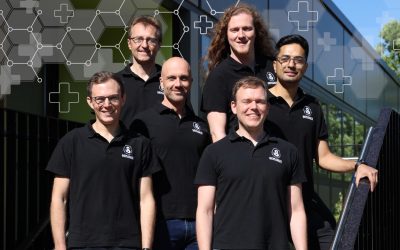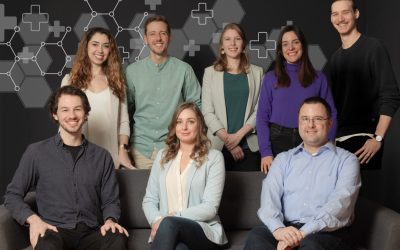Highly innovative companies are often spoilt for choice: which technologies have potential and strengthen the overall strategy? Which ideas are valuable but create inefficiencies in implementation and should not be pursued due to limited resources? And how can the latter still be used to generate value? Specific know-how and systematic clarification are needed to be able to answer questions about the potential and the possibilities of utilising innovative ideas. For medical innovations, additional regulatory requirements must be taken into account. At the MII, we have specialised in the integration of these regulatory requirements into business model development for the promotion of medical innovations and offer individual services for this purpose. In a service project for Erbe Elektromedizin GmbH, our know-how, our qualified network as well as the right methodology were used to develop possible commercialization strategies for a novel technology outside of the corporate strategy.
The challenge
Innovative strength is an essential pillar for sustainable corporate success. However, with technologies that are in the very early stages of development, it is difficult to correctly assess their potential and how they can be integrated into the company’s strategy. At the same time, resources are usually limited and must be allocated in a very focused manner. Accordingly, the balance between innovation and efficiency is a major challenge.
In the case of Erbe Elektromedizin, after 8 years of research and development, the proof-of-concept, including initial preclinical data and patents, of a promising technology were available. Nevertheless, it was clear to the idea giver and member of the management board Prof. Markus Enderle that it no longer fitted into the company’s 5-year planning. Moreover, it was obvious that due to an ATMP component, the product idea would not fall solely under the Medical Device Regulation (MDR), but also under the regulation for medicinal products. The expected additional efforts in the area of approval and commercialization were to be avoided in the interest of conserving resources. Consequently, there was a conflict of objectives between a valuable medical innovation and the necessary focus on the adapted corporate strategy.
“As the idea giver of the technology, it was important for me to initiate this project, which was extraordinary for us, with the MII. Although I have been accompanying the product idea for more than eight years now, the fruitful cooperation with the MII as a competent but also critical project partner enabled me to get to know it even better and, above all, to see the advantages in its application even more clearly. For me, the project was definitely worth it!”
Our solution
Within the project, we were able to resolve this conflict of objectives. For this purpose, the feasibility and potential of possible commercialization strategies for the innovative product idea were determined and evaluated. Over a period of 1.5 years, the following aspects were systematically analyzed and clarified:
Market research
- Research on similar technologies and identification of competitors
- Possibilities and limits of a patent application
- Analysis of existing and future markets per indication
Regulatory strategy
- Clarification of certification possibilities (combination of medical device and ATMP) in the EU and the USA
- Draft of the regulatory strategy
- Formulation of intended use with options for expanding the indication
Value of the technology per indication
- User interviews on product requirements and clinical benefit
- Identification of product benefits per indication
Partner for commercialization
- Identification of potential buyers in the B2B sector
- Elaboration of the individual value proposition for the respective counterpart
The service project was implemented by our internal experts in the form of planning, project planning, literature and market research, user surveys, concept development and written reports. Our start-up experience in entering new markets and developing creative commercialisation strategies provided particular added value. In addition, carefully selected experts from the MII network and, depending on the project phase, Erbe’s resources from the IP, Market Intelligence and Regulatory Affairs departments were consulted.
The result
Within the project and across the work packages we elaborated, questions about the market were answered, certification strategies were developed taking into account the combination of medical device and ATMP, the existing patent protection was plausibilised and joint decisions were made on the further procedure regarding the commercialisation of the technology. In addition, we were able to identify potential partners for the technology’s commercialisation and to formulate target-group-specific arguments for addressing them. For this purpose, the added value of the technology was evaluated according its medical indications – from neurology to urology.
With our help, clarity was created about the value and the chances of success of the technology, which also enabled the decision-making process on how to proceed. Erbe Elektromedizin can now approach relevant partners for the commercialization of the product idea in order for it to get into application in the end.
As an owner-managed family business, Erbe Elektromedizin GmbH develops, produces and sells surgical instruments, equipment and services worldwide for professional use in a wide range of medical fields. Erbe solutions are leading in many countries and are therefore an integral part of the surgical workflow. They include electrosurgery, thermofusion, plasma surgery, cryosurgery and hydrosurgery. The combination of these technologies into hybrid solutions enables innovative application possibilities, which mainly set accents in general surgery, gastroenterology, gynaecology, pneumology and urology.







